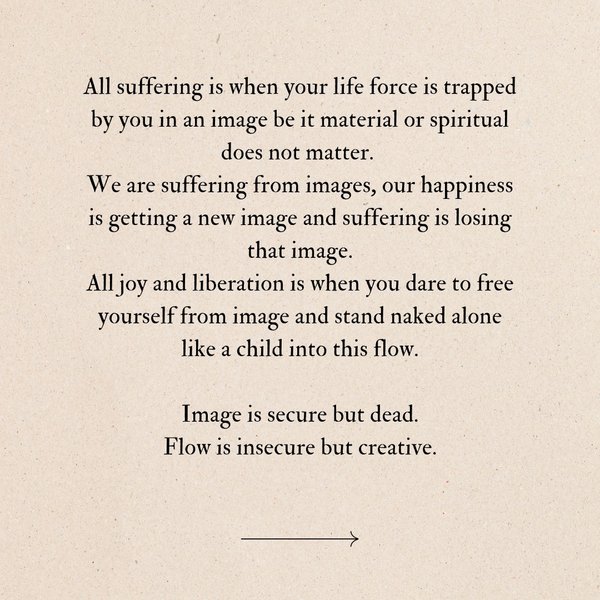Sublime
An inspiration engine for ideas
With deeper understanding you'll see that the two things you see as contradictory are actually one in the same. When you get it, it won't be as it is now.
This is subtle stuff so be patient and not so extreme in your practice. Much of the issue you... See more
Sadhana is the movement from being a contracted individual back to our essential divine essence. It is the return home, from jiva to Shiva. This aspect of Shaivism includes contemplations and meditative techniques.
Swami Shankarananda • Consciousness Is Everything: The Yoga of Kashmir Shaivism
While Śrīvidyā is the name of a particular path, it also refers to the central mantra of the tradition as well as its ultimate goal—svatantra or absolute freedom through the realization of auspicious wisdom.
Kavitha Chinnaiyan • Glorious Alchemy: Living the Lalitā Sahasranāma
By concentrating on the essence of the divine Idea, we break open the barriers of our mentality, arriving at a state of consciousness where each Idea and movement is held in the infinity of the Divine, spontaneously working itself out not through a separate act of will, but by the general force of consciousness behind it.✨
All the injunctions and examples he gave converge on the one point of weakening self-interest and assailing the I- am-the-doer illusion.
Arthur Osborne • Ramana Maharshi and the Path of Self-Knowledge
Gross matter is actually an evolute or derivative of something subtler, the subtle elements, and these of something subtler still, the ego, which is an evolute of buddhi, intelligence. This means buddhi underpins all reality, even as buddhi itself is a manifestation of prakṛti and the guṇas, or, put differently, any expression of reality,
... See moreEdwin F. Bryant • The Yoga Sutras of Patañjali: A New Edition, Translation, and Commentary










